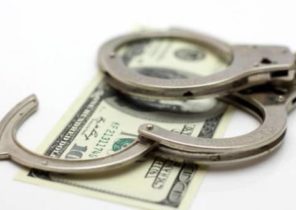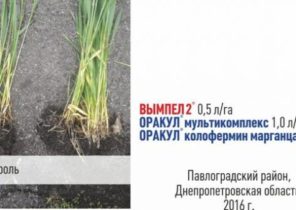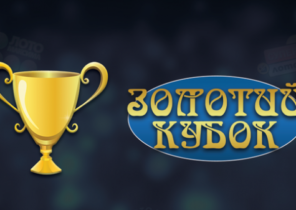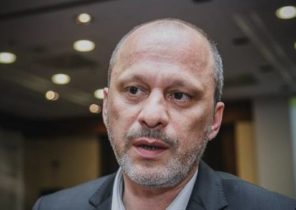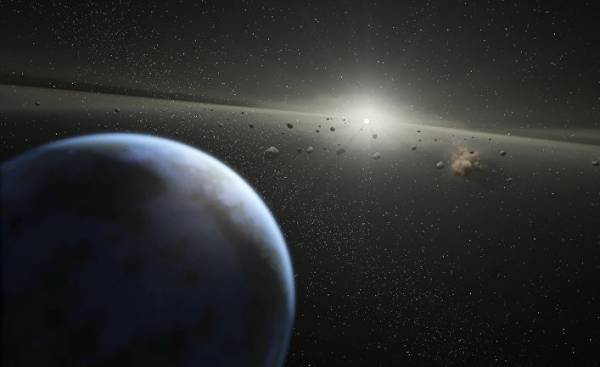
65 million years ago an asteroid with a length of 10-15 kilometers, moving at speeds from 57 to 115 thousand km/h, crashed into the Ground. As a result of collision within minutes formed a crater with a diameter of 180 kilometers, the earth’s surface melted, and climbed the huge mountain ranges. The blast was triggered by a devastating mega-tsunami, and the solid debris fell on the surface of the earth in a fiery rain. The dust rose into the atmosphere, and the planet was covered with darkness for weeks, maybe months. The asteroid impact led to the Cretaceous-tertiary extinction. On the Ground were killed 75% of all species of plants and animals, including dinosaurs.
Astronomical and geological findings indicate that the repetition of such events is only a matter of time. Maybe not tomorrow or in the next hundred years, but it will happen. In this regard, some astronomers fear that humanity is not making sufficient efforts in order to avoid the impending disaster. The day of the asteroid (“Asteroid Day”), celebrated on 30 June, is an international information campaign aimed at highlighting the problems and threats hanging over the planet. Last year, the UN declared the international Day of the asteroid. On this day 700 events are held in more than 190 countries, meetings are held with the participation of experts and scientists, you can monitor live. The Discovery Channel will show a series of thematic documentaries, and premiere of “How to survive the fall of an asteroid”, which was attended by activists of the information campaign.
Here is a fragment of a speech of one of the popularizers of the day of the asteroid, NASA astronaut, former participant of the program Apollo, to Grow Sweikart (Rusty Schweickart) to broadcast Discovery Channel: “That night on the planet hit by thousands of hits. Every day the Earth falls 100 tons of asteroids. Most of them are the size of a grain or a pebble, and only two or three body the size of a soccer ball. The threat that we may fall a larger body, and then on Earth there will be massive destruction. And it is only a matter of time.”
Beyond the threat of the fall of a huge asteroid, capable to destroy mankind, the initiators of the company are warning about the real danger and more modest objects. The diameter of these bodies tens to hundreds of meters, and they are in large numbers are spinning at the closest to Earth orbits. As a result of collision with one of these objects can be destroyed, whole cities or even regions.
Here is a recent example. A meteorite with a diameter of 17 meters, fell in Chelyabinsk February 15, 2013, triggered an explosion at a power of 35 times superior to the bomb dropped on Hiroshima. This fragment, discovered by scientists only after entering the Earth’s atmosphere turned into a fiery projectile. Fortunately, this object was composed of not very dense material, therefore, the bolide exploded in the air and did not cause serious damage on the ground. However, the explosion damaged 7,200 buildings in six cities, 1 500 people were injured. Mostly injured people who were at the time of the explosion at the window to get a better look of what is happening.
At the beginning of the last century, the larger object was the cause of further destruction. We are talking about the Tunguska meteorite. On 30 June 1908 an object with a diameter according to various sources from 30 to 50 meters, destroyed a total of 2 thousand square kilometers of Siberian taiga, or 80 million trees. Now this date is celebrated as the Day of the asteroid. Explosion capacity of 1000 bombs dropped on Hiroshima, occurred on desert territory. But what would be the consequences, drop an asteroid in a densely populated area?
There is the opportunity to prepare
Fortunately, the space Agency is able to develop technology to change the trajectory of the motion of objects this size, and astronomers have the tools needed for early detection of threats. However, scientists need broad public support and adequate funding.
“Unlike earthquakes, tsunamis or hurricanes a collision with an asteroid belongs to the category of disasters that can be prevented,” says one of the popularizers of the Day of the asteroid astrophysicist Hakeem Oluseyi (Oluseyi Hakeem). “With proper preparation you can predict future collisions”.
Unfortunately, the problems of asteroid impacts is not included in the priorities of any serious organization. In December 2016 the members of the European space Agency (ESA) has not approved funding the mission “Asteroid Impact Mission” (AIM)”, involves the creation, in cooperation with the NASA program testing technologies to change the trajectory of asteroids. Preference was given to the mission on the Mars exploration ExoMars. Every day astronomers are discovering new space debris near Earth, but the rate of detection is very low.
If there is clear evidence of the destructive power of asteroids and develop the technology in the future to prevent collisions, why is this problem not taken seriously?
Debbie Lewis (Debbie Lewis), an expert on emergencies and threats, promoter of the Day of the asteroid, said that the main reason is that these events are usually no witnesses. “We all know what tornadoes, floods, hurricanes or earthquakes, because these events happen in everyone’s life”. Agrees with her and Schweikart, who believes that “not everyone in life can witness the fall of a large asteroid”. If there are no witnesses, then the phenomenon itself would not exist.
To see to believe
Large telescopes convince us otherwise. To the naked eye on the surface of the moon you can see traces of the fall of asteroids over the past 4 billion years. On Earth such traces are hidden by the movement of tectonic plates. In 2009, astronomers witnessed a powerful collision of the comet “the shoemaker — levy 9” with the planet Jupiter. As a result of collision on the turbulent surface of the planet for a few weeks formed a spot that exceeds the size of the Earth. And what on Earth? In the period from 1994 to 2013 in the earth’s atmosphere was discovered 556 fireballs and flashes and fireballs formed by falling asteroids in size from one to 20 meters.
But what happens beyond Earth? It is believed that scientists have discovered only a hundredth part of all asteroids in the Solar system (fortunately, this is 90 percent of the largest asteroids). Besides, most are at great distances, in the Kuiper belt or further, and also in the asteroid belt, a large gathering of debris between the orbits of Mars and giant Jupiter. These fragments do not pose a serious threat to our planet.
But the situation may change if these asteroids or comets under the influence of solar gravity approach less than 1.3 astronomical units (a.e.) to the Ground (and.e. is the distance from the Sun to our planet). Such objects are “Objects near Earth” (NEOS). Body, reaching 150 metres in length and approached the Earth closer than 7.5 million kilometers (for comparison, the minimum distance from the Earth to Mars is 53 million miles), are considered potentially dangerous objects (Poo). On average, only 4% of NEOS are potentially hazardous objects.
Observation of the sky
In any case, astronomers are constantly searching for glowing objects in the sky, which can be an astroid or comet heading toward Earth. Through this work, undertaken by many observatories on earth and in space, including “De Cam Neo Survey”, “NEOWISE,” and “Catalina Sky Survey”, only in 2015, was opened 1 500 NEOS. But this may not be enough.
“Thousands of astronomers carried out observations every night,” says Schweickart. “But we need more equipment in order to predict collision threat, and to do this we need to set the location of about 10 million objects.” How much is left to find? At the moment, scientists localized about 16 300 NEOS.
In this regard, the organizers of the Day of the Asteroid made a “100X Declaration”, which States the need to achieve a hundredfold increase in the number of localized asteroids. Astrophysicist Hakeem Oluseyi (Oluseyi Hakeem) believes that at the moment there are three ways to achieve this: using optical telescopes, radio telescopes and space infrared telescopes.
In turn, the White house in 2016 announced its goal to increase the percentage of discovered asteroids larger than 140 meters in up to 90%. According to the report on the national strategy of preparation for strikes OZS, has opened 28%. “the power of the explosion in the collision of these objects with the Earth is equivalent to 60 megatons, which exceeds the amount of energy released when tested the most powerful nuclear bomb ever tested on Earth (Tsar bomb load of 50 megatons)”. Such a collision can lead to local destruction.
300 thousand of objects is more than 40 meters
According to the jet propulsion Laboratory (“Jet Propulsion Laboratory” or JPL), in addition to objects of several hundred meters, have not yet discovered about 10 million bodies with a diameter of over 20 meters and about 300 000 with a length of over 40 meters. Such objects are capable of destroying entire cities.
The degree of danger (can collide with the surface, can cause damage that can lead to destruction) is an important characteristic in the assessment of asteroids. Usually when you open a new OZS, about this object almost nothing is known, and only after several months or even years of observations, scientists begin to determine its characteristics. The only way to know its size, shape, mass, chemical composition, precise orbit and possible angle of impact. All these factors are very important for predicting the trajectory of the object and possible threats.
Explanation to Grow Sweikart and statements of expert don Jamanca (Don Yeomans) should be: “to protect the planet from asteroid impacts, you need only three things: quick to detect them, to detect them quickly and quickly to find them”.
As told to ABC Michael Cooper (Michael Küppers), researcher at European space Agency (ESA), member of the project AIM, “the necessary reserves in 10-15 years in time to change the asteroid’s trajectory, although this depends on many factors.” Therefore, it is very important to detect these objects in the future to have the opportunity to send a mission to change their trajectories. Coopers was also recognised that there is a danger of penetration of objects from outside the Solar system. The asteroid may pass close to the Sun and go unnoticed. Such an object may need a few months to reach Earth, and it will be very difficult to avoid hitting him.
Space ships and nuclear bombs to deflect asteroids
Now there are several theoretical technologies to change the trajectory of asteroids. Gravitational attractor, the way in which big spaceship uses its engines and its own gravity to a gradual change of course of the asteroid. Kinetic RAM — driven collision at high speed of the spacecraft with the asteroid, which leads to a shift of the trajectory of the chip. Laser ablation — the use of light pulses to impact the surface of the asteroid, resulting in formation of steam jets and particles that can change the orbit of the body. In as a last resort the possibility of using nuclear warheads. This is the only way to destroy or deflect a large object, but can form many small fragments, and will not be able to slow down larger fragments.
Every year in the atmosphere burns one asteroid the size of a car, turning into a fireball. Once in 100-1000 years falls to the Ground object the size of a football field, capable of destroying an entire city. Every few thousand years, arrives an asteroid capable of destroying the territory of the middle States. Such asteroid fell in the South-East Asia 700 thousand years ago. About once in 10 million years there is a collision with an object several kilometers in length. If the asteroid fell right now, he could destroy all of humanity or lead to many millions of victims.
Such phenomena occur very rarely, so at the moment not registered any death in connection with the fall of the meteorite. Compared to these space debris pollution, harmful radiation or vehicular traffic are more tangible threats. However, this is a real threat, warn us popularisers of the Day of the asteroid.
“I believe it is extremely important that people understand how important it is for each of us, not just for politicians, scientists, engineers or people involved in this project,” says film Director Greg Richter (Greg Richter), one of the participants of the campaign, the Day of the asteroid. “We owe it to our planet and for our species.” For this, in his opinion, need to attract widespread public attention to this issue. The economic costs of this project will not exceed the amounts allocated to other research projects.
“For me it’s like car insurance. Many people drive a car and assume that sooner or later they’ll have an accident”, — said in conclusion, Schweickart. “We don’t want to worry about that, we want to pay for insurance. (…) Now we need insurance to be able to find and change the trajectory of these objects. In the future, when the time comes, we will be able to save human lives. That’s all. We can connect this activity to the entire planet, if people will pay attention to this topic. I hope that by the Day of the asteroid, people will be able to get enough information and help political leaders make the right decisions.”
As with other global challenges such as climate change or poverty, the solution to the problem of large asteroid impact is perhaps one more chance to prove that humanity can unite efforts in the name of prosperity of future generations. Alternatively you can cross your fingers and pray that this disaster did not happen until our civilization.
